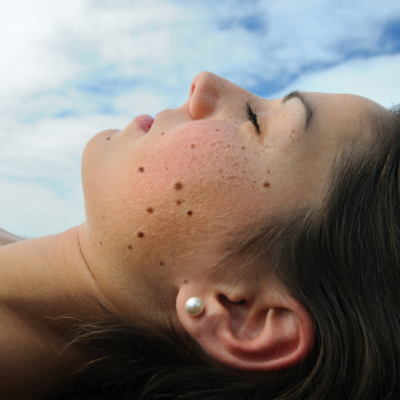Basal Cell Carcinoma
Basal cell carcinoma is the most often diagnosed type of skin cancer. It accounts for over 90% of all skin cancers in the United States. While basal cell carcinoma tends to be slow-growing, if left untreated, it can spread into nearby skin, cartilage, bone and other tissues.
According to the most current data:
• An estimated 3.6 million Americans are diagnosed with basal cell carcinoma every year.
• More than one out of every three new cancer cases in the U.S. are skin cancers, and the vast majority of those are basal cell carcinomas.
• The diagnosis and treatment of nonmelanoma skin cancers, including basal cell and squamous cell carcinomas, increased by nearly 77% between 1994 and 2014.
How Basal Cell Carcinoma Forms
Basal cells are one of three main types of cells in the top layer of the skin. DNA damage, mostly from sun exposure, can trigger unhealthy changes in basal cells in the outermost layer of skin—the epidermis. These corrupted cells then replicate.
What Basal Cell Carcinoma Looks Like
It’s important to note that one person’s basal cell carcinoma can look different from someone else’s. Although basal cell carcinomas mostly appear in areas most exposed to the sun—face, ears, shoulders, and neck to name a few—they can also appear in less obvious places.
Be suspicious if you notice:
• A new skin bump that appears pearly, waxy, white or light pink, flesh-colored or brown (especially in darker skin tones), has blood vessels on it, or appears red and scaly
• A sore that doesn’t heal, that bleeds or oozes, is indented in the middle, or forms a scar without any injury having occurred
• An existing bump or mole that changes in color, texture, or size with larger growth and asymmetry
How to Catch Basal Cell Carcinoma Early
Make it part of your self-care routine to regularly check your skin. This can help you recognize if something on your skin’s surface changes.
It’s also good prevention strategy to get your skin checked by a board-certified dermatologist once a year, especially if you’ve had basal cell carcinoma before. California Skin Institute dermatologists are trained to spot new or recurring signs of basal cell carcinoma, as well as other types of skin cancer.
Disclaimer
This is to be used only as an educational piece. Individuals should not use it to self-diagnose a skin condition or problem.
Treatments for Basal Cell Carcinoma




 / 291 Reviews
/ 291 Reviews